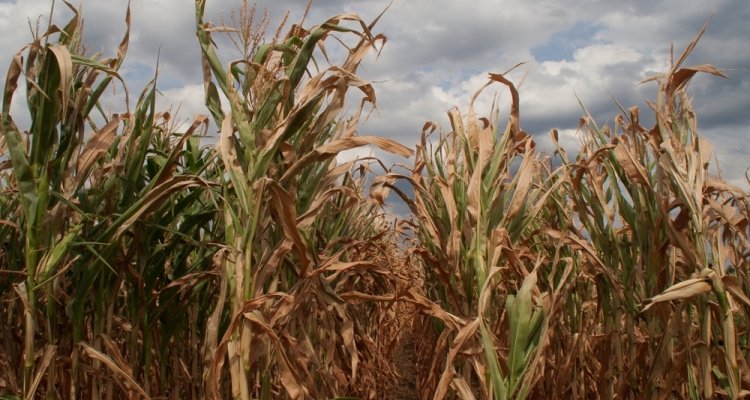
News
Reaction of plants to drought can be seen in the composition of the atmosphere
Hot and dry periods, such as this summer in Europe, appear to change the composition of the atmosphere. Researchers from Wageningen University & Research and NOAA discovered a 'signal' in the composition of CO₂ in the atmosphere that is caused by the reaction of the vegetation to drought. Various climate models can now be adapted in accordance with the measurements. The researchers reported their findings in Nature Geosciences on 27 August.
In case of severe drought, plants close their stomata – minuscule openings at the bottom of the leaves – so they lose less water to the warm and dry air around them. Closing the stomata also means that the plants absorb much less CO2 from the air, which is needed for growth and metabolism. When this happens on a continental scale, such as this summer in Europe, much less water is transpired and CO2 is absorbed. As a result, this changes the composition of CO₂ in the atmosphere.
Drought on a continental scale
The analysis of the international research group showed that the drought response of plants affected more than one million square kilometres during extreme droughts in Russia, Europe and the United States. For several decades, researchers had collected air samples using a standardised method at more than fifty locations in these regions. These samples were analysed at NOAA's Earth System Research Laboratory in the USA.
Measuring two types of CO2
The analysis showed that the atmospheric composition was different during severe droughts from that during regular weather conditions. In case of drought, plants not only absorb less CO2, but the composition of the CO2 that is absorbed is different. The researchers looked at two isotopes of CO2 in the atmosphere: the light variant 12CO2, which plants prefer, and the slightly heavier 13CO2. During droughts the preference for the lighter variant is much smaller. As a result, the ratio between 12CO2 and 13CO2 is different than during a normal summer. This large-scale 'drought signal' has now been identified for the first time in the atmosphere. "I saw that our measurements deviated from what climate models predicted," says Erik van Schaik, who discovered this deviation in the models two years ago and tried to understand the causes. "When I determined that many other models of the biosphere showed the same deviation, that was a relief. It was not due to my analysis, but the models turned out to be incomplete."
Adapting the climate models
The lead researcher in the study was Professor Wouter Peters of Wageningen University & Research. He outlines the implications of the discovery: "It appears that many climate and biosphere models have not accurately described the effects of drought periods on CO2 absorption and transpiration of water. Adaptation of these models is important because we assume that droughts will be both more severe and more frequent in the future."
The researchers used more than 25 thousand air samples in their study, taken at 53 locations from around the world. The CO2 samples taken in the Netherlands originated from the recently funded Ruisdael research infrastructure, which is the Dutch contribution to the European Integrated Carbon Observing System (ICOS), in which WUR is an active partner. The climate and biosphere models that were used to compare the outcomes of the measurements are part of the model systems that IPCC uses to create scenarios for global climate developments.